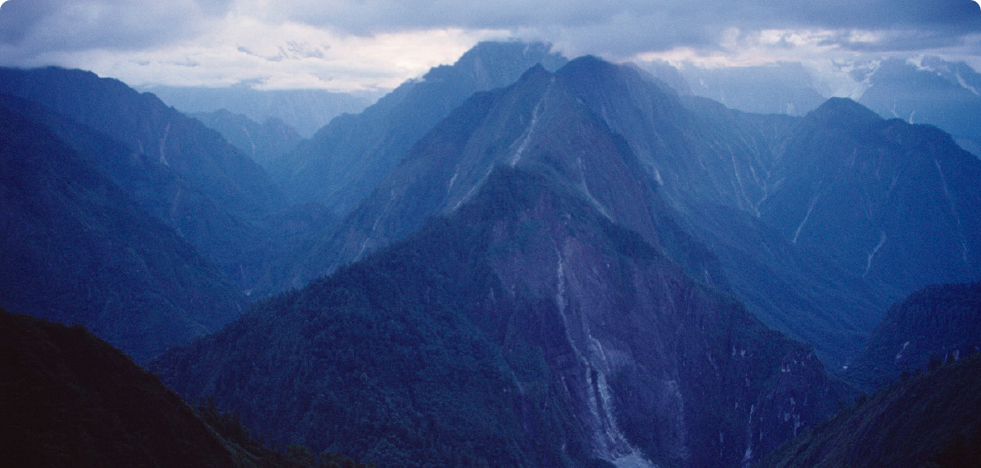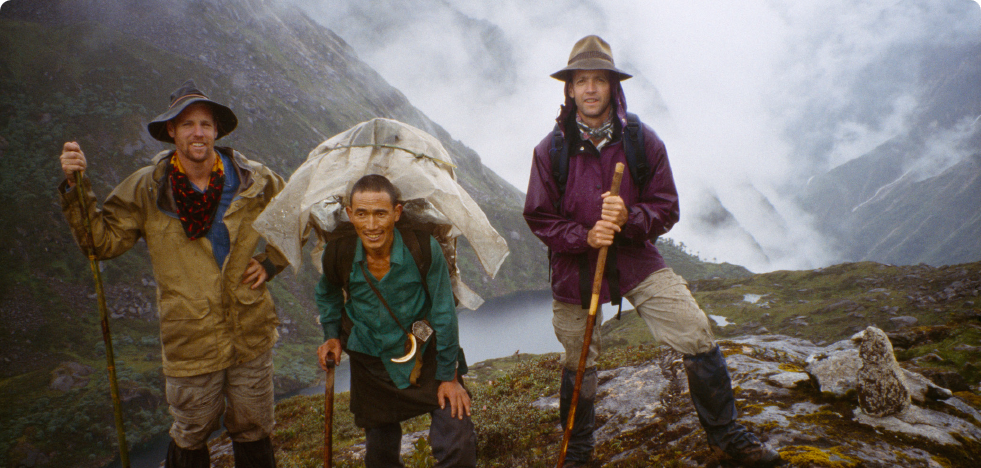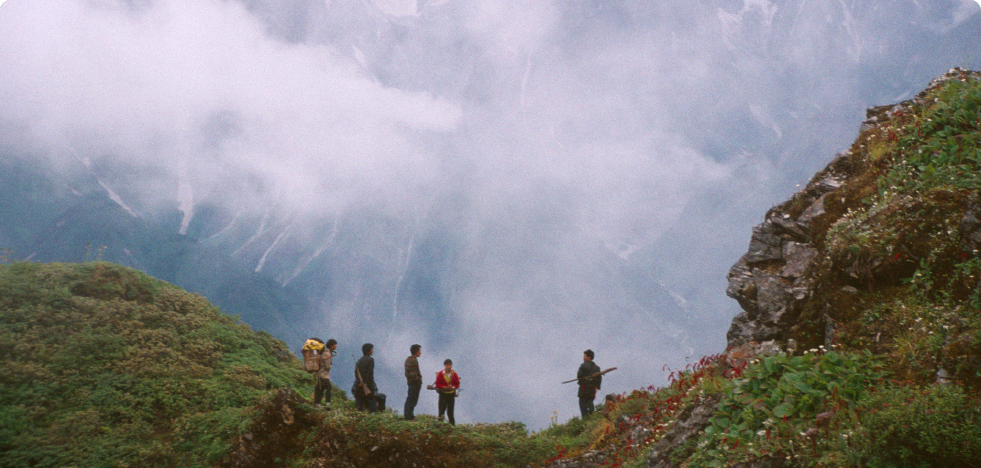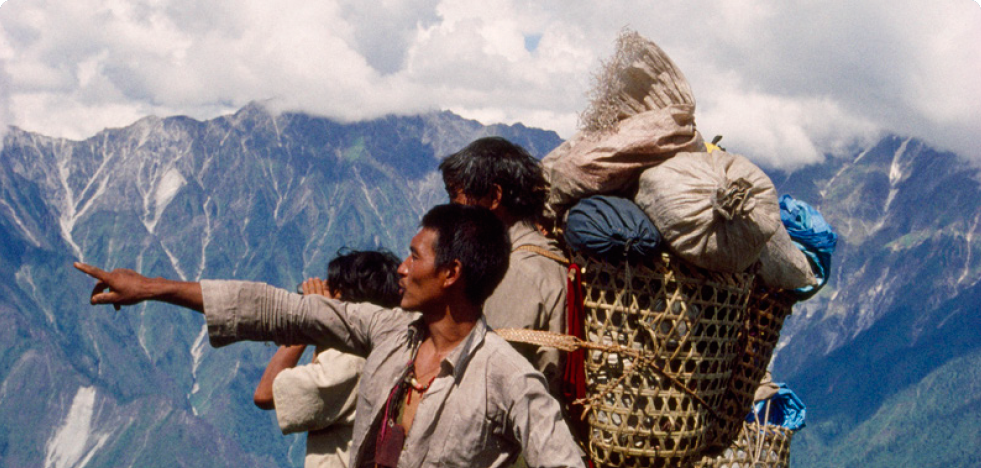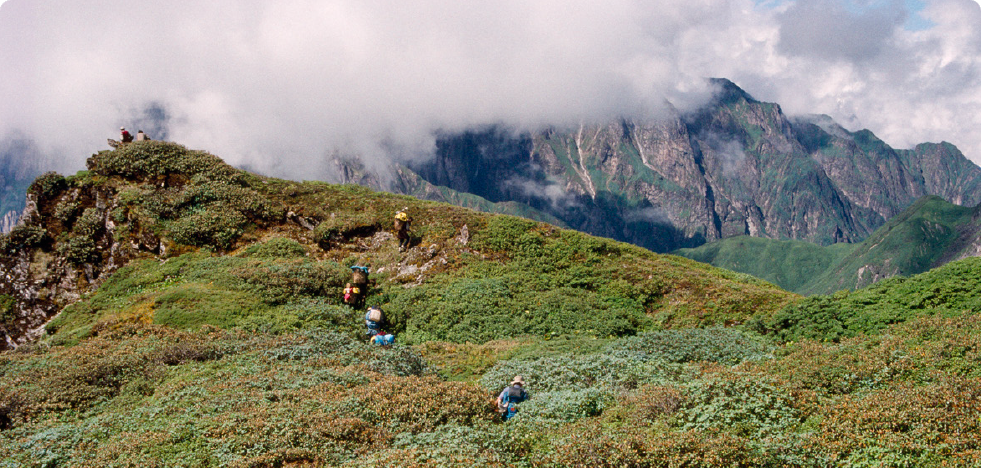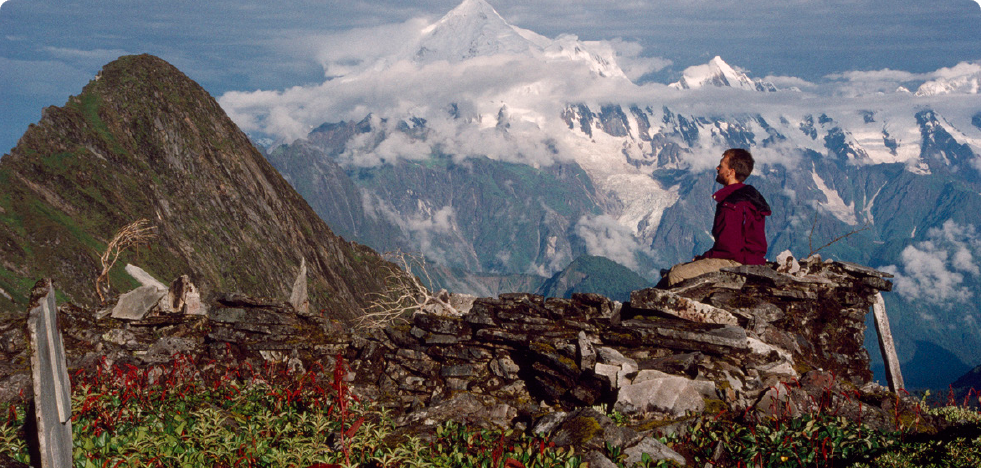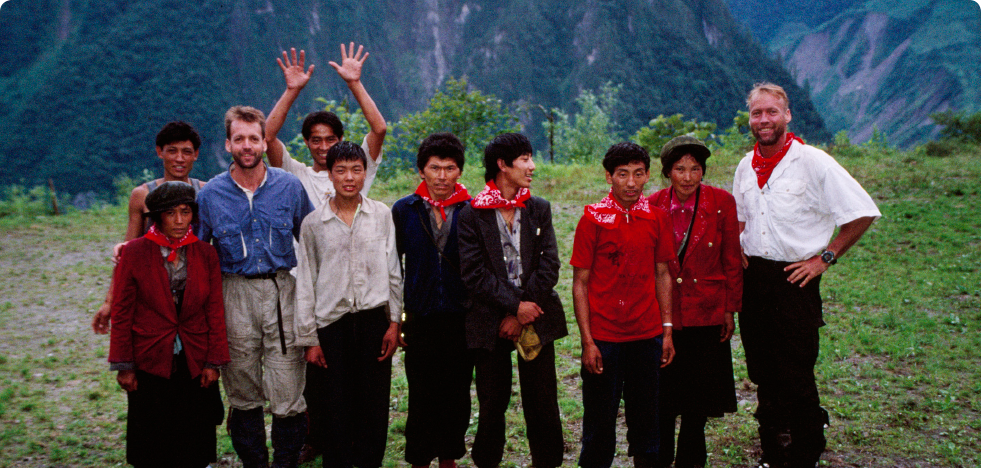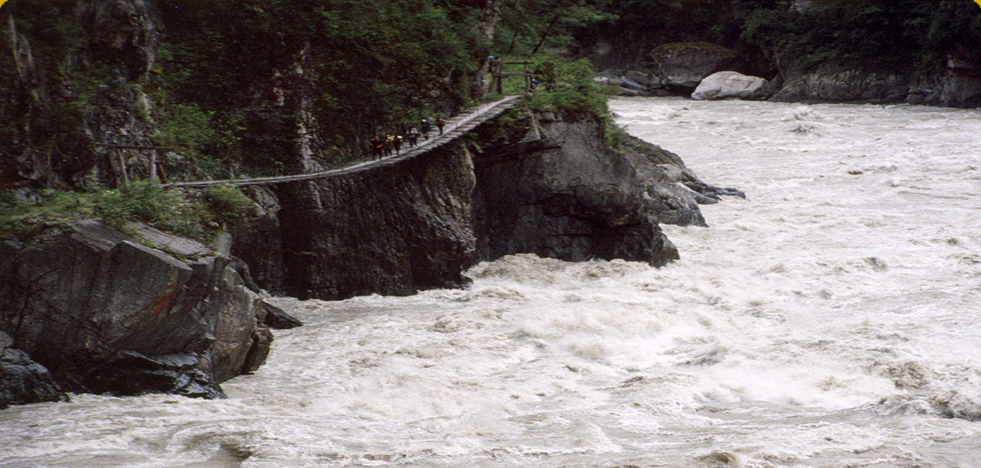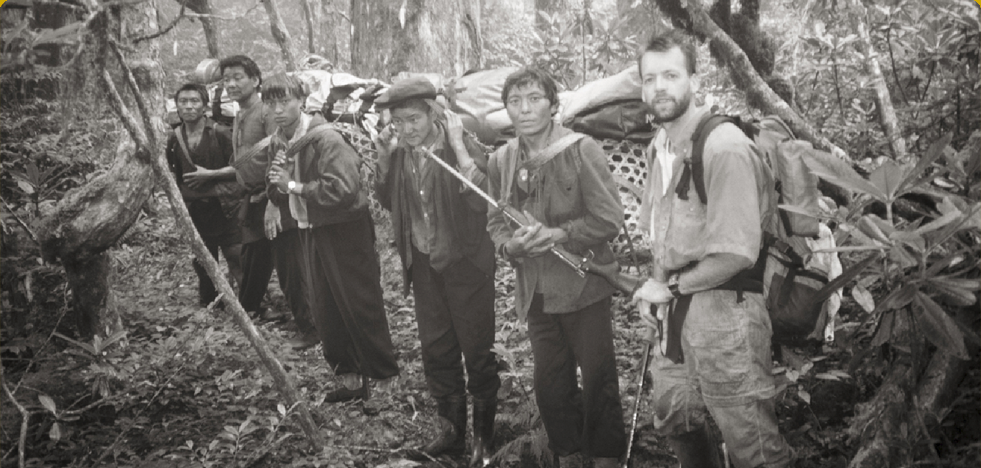Introduction
My name is Powell Barlow Gillenwater, III. I go by Gil. This web site anticipates a book now in process. The primary authors are my brother Troy and I. There are seven additional contributors from our 1994, 1995 and 1997 expeditions.
It’s a story of a rumored land, sequestered by fate and abandoned by time – The Hidden Lands of Tibet. It’s a story of trespass – of unearthing the planet’s final fabled landscape. It’s a story of risk, chance and intrigue. It’s a story that was hijacked to capture the world’s attention. No less than a dozen books have chronicled its exploration. Yet until now, backed by photographs, video, journal entries, interviews and recorded phone conversations, the real story…. our story…. has never been told.
The Hidden Lands of the Blossoming Lotus - Tibet Hidden Falls
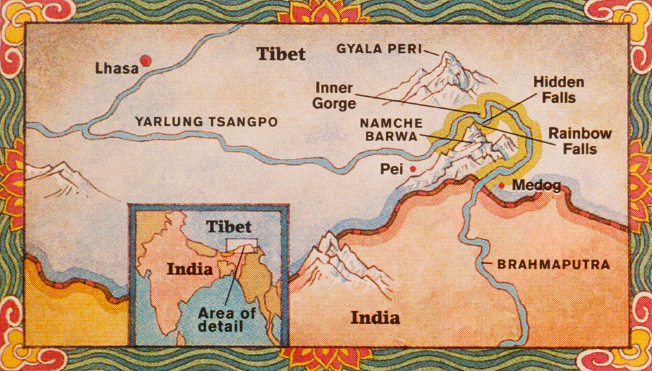
The Great Bend of the Yarlung Tsangpo River. At the time of our first expedition in 1994, this was one of the least known and last unexplored “Hidden Lands” on the planet. How was this reclusion possible in a modern world?
There were five major factors.
Communication: Mobile phones and the internet were in their infancy. Range was limited rendering both useless in the Himalayas. Google Maps was non-existent.
Geography: Colliding tectonic plates make the Himalayas one of the world’s most unstable landscapes. The “thrust-pivot point” of this geologic contortion is the “Great Bend of the Yarlung Tsangpo”. This is the heart of Tibet’s “Hidden Lands”, also known as Pemako. It contains the deepest gorge in the world - 19,714 feet (almost 4 miles). Constant geologic pressures produce earthquakes, landslides, fissuring and avalanches. Maintaining passable roads and major trails is virtually impossible.
Weather: The tropical Bay of Bengal produces monsoon clouds of epic proportions. Lumbering across the plains of India they are thwarted by the Great Bend’s towering peaks. Unable to advance, the chronic monsoons unleash torrents of rain and violent storms into the world’s deepest gorge making this area uniquely inhospitable to travel. Until recently, the perpetual cloud cover prevented aerial photography and mapping.
Tribal: Aboriginal Abor and Mishimi tribes straddled the southeastern frontier of Tibet. Fiercely territorial, these tribes attacked all who attempted to enter the Hidden Lands. In addition, the indigenous Monpa and Lopa tribal people possessed the same xenophobic and aggressive attitude. “Poison Cults” flourished. Several early explorers were murdered and in the mid-to late 1800’s and early 1900’s three British military incursions were defeated and chased out of the country, further isolating the area.
Politics: For centuries the country of Tibet has been politically closed to outside travel. Initially to halt colonial expansionism followed by the strangling security of the Communist Chinese occupation. In the mid-1980’s China relaxed its grip and began allowing organized “group” tours to Tibet's major cities. However, the zone around the Hidden Lands remained off-limits to outsiders due to its proximity to the disputed Indian border. In the early 1990’s China grudgingly opened the area to exploration by a fortunate few. We were among the fortunate few. Shortly thereafter the area was again “closed”. It remains closed to this day.
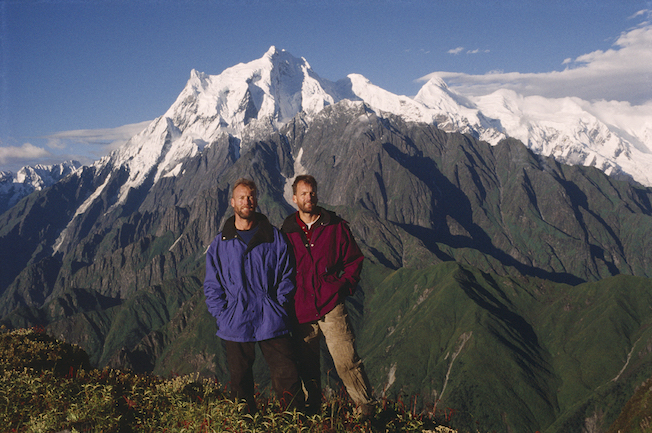
Gil & Troy Gillenwater with Kangla Karpo (22,339’) brilliantly behind.
This photogrqph was taken on their epic, “The Rainbow Traverse of the Great Bend of the Yarlung Tsangpo”, in 1997.
With a life-long interest in Tibetan Buddhism, the year I turned forty (1994) I promised myself I was going to visit this exotic country. Serendipitously, two weeks before my birthday an article appeared in The Arizona Republic featuring a Tucson canyoneer, Rick Fisher. He was traveling to Tibet to raft the mighty Yarlung Tsangpo River – the world’s highest and most violent river. In addition, he was on a quest to find the legendary, “Lost Falls of the Brahmaputra”. He was seeking people with hiking and rafting experience. My brother Troy and I fit the bill and it didn’t take much to convince Troy. The next day we drove to Tucson, met Rick, and joined the expedition.
Hindsight shows destiny’s hand. Our numerous outdoor adventures set the stage for the demanding physicality of our expeditions into the deepest gorge on the planet. Likewise, a lifetime study of Buddhism and practiced meditation prepared me for the inexplicable potentiality of this sacred landscape.
With some of the first permits issued by the Communist Chinese, we traveled to Tibet for adventure and a deeper understanding of the Buddhist teachings. We had no designs on solving one of the world’s last great geographic mysteries – The Riddle of the Tsangpo Gorge. Our 1994 expedition into the Hidden Lands grew into two more, 1995 and 1997. In 1995, Troy and I were fortunate to have our younger brother Todd join us on a grueling month-long pilgrimage to the luminous Kundu Dorsempotrang Mountain – Vajrayogini’s heart chakra. Purportedly poisoned by Dugmas, we barely made it out alive.
The region we were exploring is known to the Tibetans as Beyul Pemako or, “The Hidden Lands of the Blossoming Lotus”. This is the heartland of Vajrayana, or “old school” Tantric Buddhism. Pemako is a mystical place where ordinary Western logic breaks down. The limited perceptions of our five senses were woefully inadequate to explain the incomprehensible phenomena that we experienced daily. Events that would otherwise be “impossible” in a three dimensional world occurred with predictable regularity.
Our three expeditions into this veiled Shangri-La culminated in 1997 with a true gift. Having split from the main expedition, my brother Troy, myself and two young Sherpas, Dawa Yakpa Lama and Bhim Bahadur Mahar (and subsequently Ken Storm), traveled unpermitted (which resulted in our eventual arrest), without maps and without benefit of mobile phones or GPS devices into one of the most hostile, unknown and unforgiving environments on the planet.
Facing seemingly insurmountable odds, we embraced the spiritual essence of Beyul Pemako. We relinquished control - for in these environs we had none. We traveled on intuition without schedule. We journeyed on trust for we had the solidity of earth beneath us and the unlimited potentiality of the heavens above. Following the teachings of Tibetan meditation master Chögyam Trungpa, combining these two great forces and then giving them away for the benefit of all sentient beings we were able to draw the magic of the natural world into our lives and into our odyssey. (In 1995 we retraced Trungpa’s 1959 escape from Tibet.) We gave away all pretenses of schedule, route and goal and wondrously our expedition morphed into an organic, revealing pilgrimage of discovery.
Whether you are an adventurer, a Buddhist practitioner or you just like a good read, I think you are going to enjoy this book.
To follow the book’s progress click on “Blog” on the toolbar above and subscribe.
Likewise, for further explanation of the area and the Buddhist teachings relating to our journeys, click here or “Vajrayogini” in the toolbar at the top of this page.
My sincere thanks to Neill Fox of Foxnoggin: http://foxnoggin.com/ for his inspirational graphics. Neill is a life-long friend to me and to Rancho Feliz.
I’d also like to acknowledge Cliffie McKay of Player Seven Web Design http://www.playerseven.com/ for his creative expertise in establishing this web-site.

